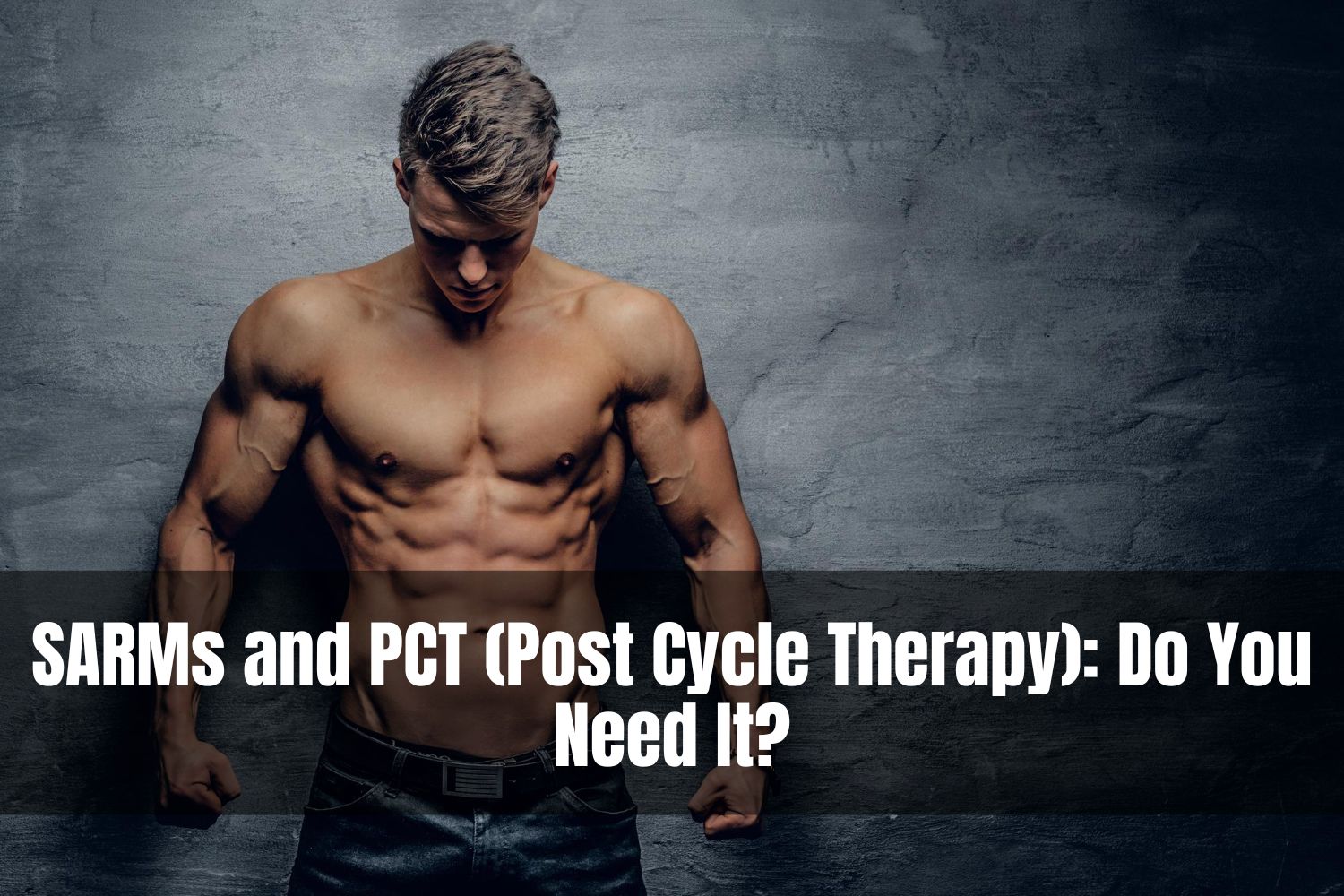SARMs (selective androgen receptor modulators) have become increasingly popular supplements among fitness enthusiasts and bodybuilders looking to enhance muscle growth and strength. Unlike traditional steroids, SARMs are marketed as more targeted in their effects on muscle tissue and potentially less harmful when it comes to side effects. However, there are still open questions around the long-term safety and effects of SARMs. One area of debate is whether post cycle therapy (PCT) is needed after a SARMs cycle. In this article, we’ll take a look at what the research and experts say regarding SARMs PCT.
What are SARMs?
SARMs work by binding to androgen receptors in muscle and bone selectively, which stimulates anabolic activity in these tissues. They were originally developed for medical applications like preventing muscle wasting conditions. However, recreational use has far outpaced research into their efficacy and safety for human enhancement. Despite being marketed as alternatives to anabolic steroids, SARMs are not approved for human consumption by regulatory bodies like the FDA.
Unlike traditional steroids, SARMs don’t aromatize into estrogen or impact the HPTA axis (hypothalamic-pituitary-testicular axis that regulates testosterone production) as significantly. However, there is evidence that SARMs can still suppress natural testosterone production, especially at higher doses and longer cycle lengths. The degree of suppression seems to depend on the specific SARM, dose, and duration of use.
What is PCT?
Post cycle therapy refers to protocols designed to help restore the body’s natural hormonal balance after a cycle of exogenous hormones or drugs like steroids or SARMs. PCT involves taking supplements and medications to jumpstart testosterone production, block estrogen, and normalize other hormone levels.
Common PCT drugs include SERMs like Nolvadex, aromatase inhibitors like Arimidex, and HCG. The goal is to minimize side effects from hormonal changes and avoid losing muscle gains made during the cycle. PCT helps avoid problems like gynecomastia, low energy and libido, and testosterone suppression after ending a cycle.
Do You Need PCT After SARMs?
Whether PCT is absolutely necessary after a SARMs cycle is still up for debate. Some bodybuilders swear by PCT even after mild SARMs to reset hormonal balance. Others believe over-the-counter supplements like DHEA and estrogen blockers are sufficient for most cycles. Here are some key points on both sides of the argument:
- SARMs are less suppressive than traditional steroids – Some research shows certain SARMs like ostarine only decrease natural testosterone production by 15-30% even at higher doses. Mild suppression may recover without hardcore PCT drugs.
- Longer cycles increase suppression – Longer SARMs cycles of 8-12 weeks seem to increase the risk of meaningful testosterone suppression that requires medical PCT. Shorter cycles of 4-6 weeks may need less intervention.
- Individual variation in suppression – Experienced users report wide variability in how much various SARMs impact their natural testosterone levels. Some report no suppression while others see big drops even from mild SARMs. Genetics likely play a role.
- PCT drugs have side effects – Powerful PCT medications like Nolvadex and Clomid also carry risks of side effects. Some believe natural testosterone levels will recover fine after most SARM cycles without medical intervention.
- Better safe than sorry – Even if not always necessary, PCT gives peace of mind that hormonal function will normalize as quickly as possible after a suppressive cycle. A short PCT protocol can minimize muscle loss while avoiding long-term endocrine dysfunction.
Suggested Protocol
For most SARMs cycles of 6-8 weeks, a simple over-the-counter PCT plan is likely sufficient for most people to avoid side effects and hold onto gains:
- Continue exercise, nutrition, and sleep habits to support T production
- Take an OTC estrogen blocker like DIM or Arimistane for 2-3 weeks
- Use a testosterone support supplement with ingredients like DHEA for 1-2 weeks
- Get bloodwork done at the 4 week mark to check hormone levels
For longer or higher dose SARMs cycles, a more advanced PCT plan may be wise:
- 3-5 weeks of 20-40mg per day of Nolvadex or Clomid
- Continue exercise, nutrition and lifestyle habits
- Add in an estrogen blocker like Arimidex or Aromasin
- Get bloodwork done to ensure testosterone recovery
Best Place to Buy SARMs PCT Online
When looking for quality SARMs and PCT supplements, one of the best online stores is Survival Supplements. Based in the USA, Survival Supplements has become a leading provider of SARMs, and other fitness supplements. They offer a wide selection of proven SARMs like Ostarine, Ligandrol, and RAD 140. For PCT, they carry potent SERMs including Nolvadex, Clomid, and Enclomiphene. Survival Supplements is trusted for its purity testing, fair prices, and excellent customer service. All products come with free shipping in the US. For top quality SARMs and PCT supplements, Survival Supplements is a go-to source for fitness enthusiasts and athletes.
The Bottom Line
There is no definitive answer yet on whether hardcore PCT drugs are mandatory after a SARMs cycle. For mild cycles, OTC supplements may be sufficient for most people to avoid side effects and hold onto gains. For heavier cycles, medical PCT medications may be advisable to normalize hormones faster. Getting bloodwork and adjusting protocols based on individual response is key. Like all supplements, it’s wise to use SARMs conservatively, get medical advice, and monitor how your body responds over time.

